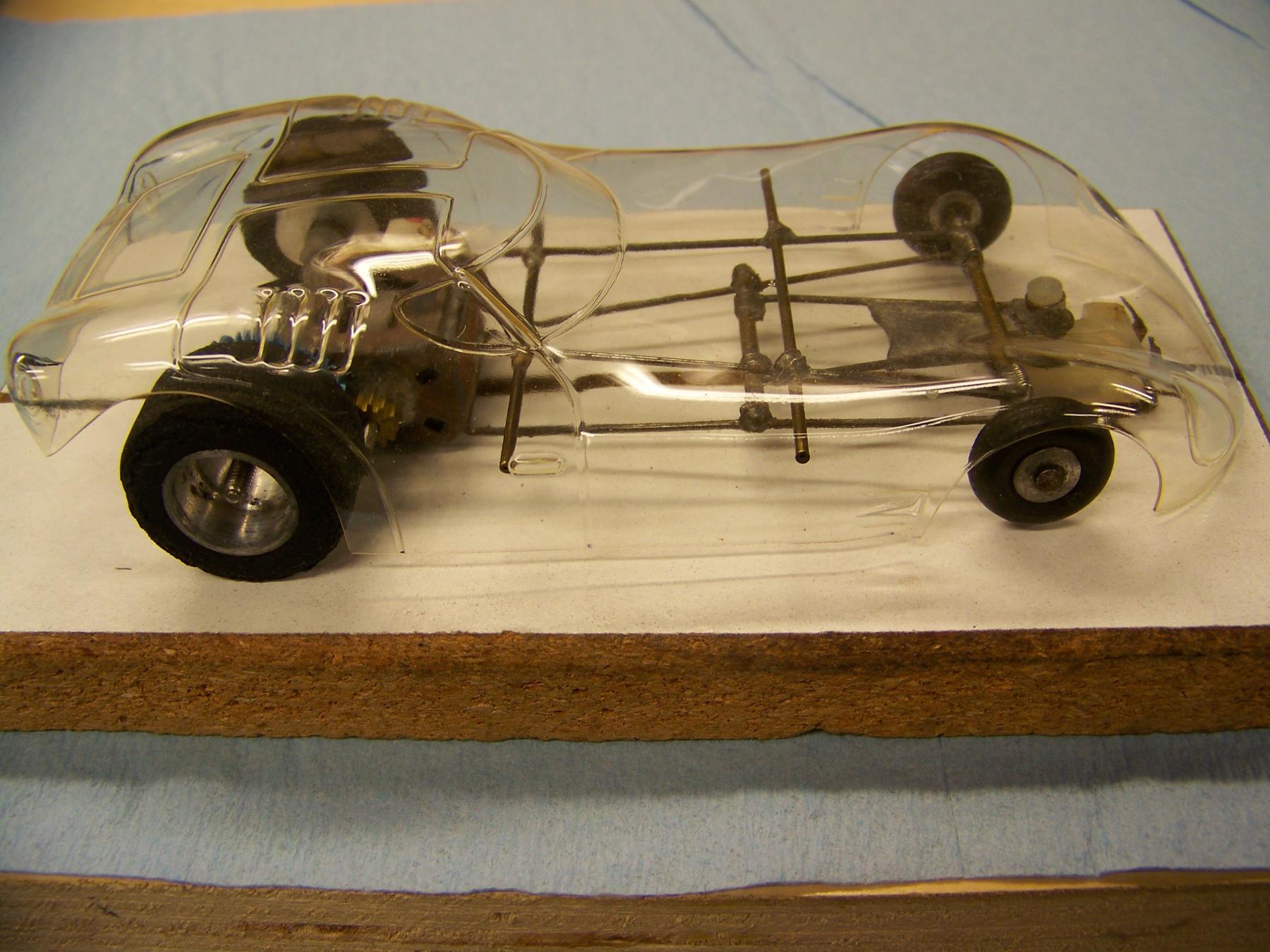Martin,
The motor can is from a Mabuchi FT-16 (produced from mid 1963 through 1965), so the chassis cannot be older than mid 1963. More likely it is 1964 or 65, but because the arm and endbell are missing, there’s no easy way to tell.
The overall “space frame” chassis architecture suggests 1965; in general it’s a little too sophisticated for 1964 and too primitive for 1966. This is a guess, as some chassis builders were clearly way ahead of their time. The workmanship is also very good, suggesting an accomplished builder.
The use of pin tube body mounts, and the way they are attached to the chassis offer some clues. Pin tube body mounts were first documented in the hobby press in 1964, and became widely popular in 1965. The fact that yours are attached to the top rail (as opposed to the bottom rail) suggest it was intended for earlier bodies that had a pronounced “curl-under” on the sides.
I don’t recognize the front wheels, although they are almost certainly independent rotation on a 1/16” axle. They could be model airplane wheels; another indication that the builder was thinking “outside the box”.
Getting this chassis running, although nowhere near impossible, could be a bit problematic.
Because the axle tube is attached directly to the motor can, there will be three hurdles to overcome:
1. The rear tire size is more or less predetermined, which means the maximum spur gear size is likewise predetermined.
2. There are a very limited number of spur/pinion combinations (resulting in suitable gear ratios) that will exactly fit and mesh properly. Best guess: 52 or 53 teeth (pinion teeth plus spur teeth). For example (48 pitch) 13-40, resulting in a 3.08:1 ratio, or 12-41, resulting in a 3.42;1 ratio.
3. You will probably not be able to use a set screw mounted spur gear; there won’t be enough room. Instead, it would probably be best to use a threaded axle and threaded spur gear. The chassis appears to be configured for right side can drive, which would put the threaded gear on the correct side. Note that with the endbell on the left side, the arm will have to rotate CW, regardless of which side the gears are on.
It should be very interesting to see how this develops! 







































